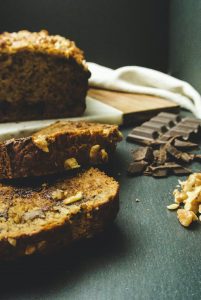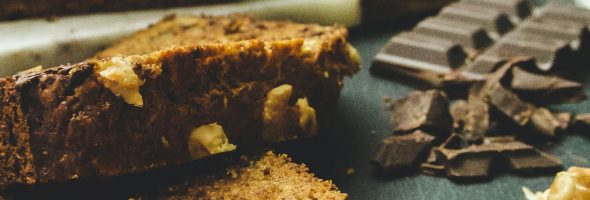
Created by Jessica Milne & Emily Shorthouse
For full elaborated description, consult Document PDF.
Learning Objective:
This lesson is an introduction to fraction concepts based on the Grade 3 B.C. math
curriculum. We will provide two activities that offer concrete, pictorial and symbolic
forms to develop understanding of how fractions are a type of number that can
represent quantities. After the lesson, students will be able to:
• Demonstrate how a whole can be divided into equal parts
• Recognize the fraction symbol as a type of number that can represent parts of a
whole
Introduction:
Fractions are used in our everyday lives. They can be used in stories we share, the
ways we represent our physical, mental, spiritual and emotional self, and how we talk
about the seasons of the year. They are represented in our currencies, and can be
found in so many aspects of our daily lives. Based on fraction concepts as they are
introduced in the Grade 3 B.C. math curriculum, we hope to offer strategies that will
help students grasp the concept of fractions representing parts of a whole.
Through an interactive story, students will have a chance to conceptualize what
happens when a whole banana loaf is split up between four friends. The story will set
the stage for a number talk where students will be asked to represent what is happening
when the loaf is divided into four equal parts. The second half of the lesson will
introduce students to the linear model of fractions with a fraction strips activity that will
provide students an opportunity to use concrete manipulatives to explore parts of a
whole.
Terms to be introduced
Fraction: Used to describe one or more parts of
a whole that is divided into equal parts.
Denominator: The number below the fraction
bar that represents how many pieces/parts the
whole is divided into.
Numerator: The number above the fraction bar
that represents how many parts of the whole are
being considered.
Prior Knowledge:
• To have a basic understanding of
equal versus not equal
• To know what one half of a whole is
• To understand concepts of division
(eg. sharing, grouping repeated
subtraction)
Connections to Mathematics 3
Big Idea: Fractions are a type of number that can represent quantities.
Curricular Competencies:
• Develop, demonstrate, and apply mathematical understanding through play, inquiry, and
problem solving
• Visualize to explore mathematical concepts
• Engage in problem-solving experiences that are connected to place, story, cultural practices,
and perspectives relevant to local First Peoples communities, the local community, and other
cultures
• Use mathematical vocabulary and language to contribute to mathematical discussions
• Represent mathematical ideas in concrete, pictorial, and symbolic forms
• Reflect on mathematical thinking
• Incorporate First Peoples worldviews and perspectives to make connections to mathematical
concepts
Content:
• Fractions are numbers that represent an amount or quantity
• Fraction parts are equal shares or equal-sized portions of a whole or unit
• Provide opportunities to explore and create fractions with concrete material
• Recording pictorial representations of fractions models and connecting to symbolic notation
• Equal partitioning
• Equal sharing, medicine wheel, seasons
First Peoples Principles of Learning:
• Learning is holistic, reflexive, reflective, experiential, and relational (focused on connectedness,
on reciprocal relationships, and a sense of place).
• Learning is embedded in memory, history, and story.
Opportunities to Differentiate:
• Have a variety of manipulatives available for play and discovery (ie. lego, blocks,
cuisiniarie rods, playdough)
• Experiential play using everyday items like granola bars, pizza, pie, or other food
• Use a variety of different shapes to represent fractions
• Students create their own stories around fractions
• Number talks / open-ended questions
Assessment:
• Use of paper strips to help with formative assessment on students comprehension
• Number talk and discussion and use of Thumbs up, sideways or down
• Observation as students are playing “Cover up” game
• Exit slips/Ticket out the door
List of Activities
- “Clover Bakes Banana Loaf” story
(to take place over 45 minute lesson):
Each student should have one strip of paper to
demonstrate how they would divide up the banana loaf.
The teacher will read the story and prompt students by
asking them how they would fold the paper to represent
the whole loaf as it is divided up equally between two friends, and then between two
more friends. This hands-on activity is a great way to conceptualize what is happening
as a whole is split into equal parts and moves towards the linear model of fractions.
After the number talk, the concepts of how to write a fraction and the terms denominator
and numerator can be introduced.
Guiding questions during story:
• Ask: “How can Clover and Ollie cut this loaf so they can each have equal amounts?”
As the loaf is a rectangle, there may be a few different ways to do this. For this lesson
the teacher will consider cutting the loaf in half like we do with fraction strips, making
sure that the students know that other ways of cutting the loaf are also okay. Refer to
the diagram in the appendix for a sample.
• Ask students to fold the paper to show how they would divide the loaf up equally
between four friends.
• Ask students if they think whether or not all the animals have equal amounts of
loaf. Does Little Grey Duck have the same amount of loaf as everyone else?
Guiding questions at end of the story:
• Does anyone know what a fraction is?
• How would you write it?
• Ask students what fractions they see in the Clover Bakes Banana Loaf story.
• What does the number on the bottom represent?
• What does the number on the top represent?
Refer to the loaf diagram in the appendix to ask the following questions:
• How would you write a fraction to represent 1 loaf that is cut into 4 pieces?
• How would you write a fraction to represent you have 3 of the 4 pieces of loaf left?
[Encourage different ways to express number: ie. three pieces out of four, or three
fourths or 3/4]
• How would you write a fraction to represent you have 2 of the 4 pieces of loaf left?
[two pieces out of four, or two fourths or 2/4]
• How would you write a fraction to represent you have 1 of the 4 pieces of loaf left?
[one piece out of four, or one fourth or 1/4]
• How would you write a fraction to represent you have 0 of the 4 pieces of loaf left?
• Can you write 4/0? [Answer = Undefined. You can’t have 4 pieces of nothing.] - Fraction Strips (can be used for various activities related to fraction concepts):
Fraction strips are a useful manipulative for students to grasp early concepts of fractions
and to conceptualize the linear model. Teachers can find resources to make their own
fraction strips. It is recommended that students prepare their own fraction strips by
folding and cutting out the individual shapes (1, ½, ¼, ⅛, 1/16) and writing out the
different fractions on each shape themselves. Experienced teachers have explained
that this process helps students to better understand the concept of this manipulative.
To add to the understanding of fraction strips, we have included a granola bar image
made into fraction strips for introducing fraction concepts and group discussions. We
recommend printing fraction strips on heavier, coloured card stock for durability. Be sure
to keep each shape of each fraction strip a different colour and the same size. See
appendix for examples.
Possible open questions:
• Can you find a fraction strip that is smaller than ½?
• Can you find a fraction strip that is bigger than ¼?
• Find 2 fraction strips that add up to 1 (ie. ½ + ½ or ¼ + ¼ + ¼ + ¼)
• Find 3 fractions that add up to 1 (ie. ½ + ¼ + ¼ )
Fraction Strips Game “Cover Up” (15-20 minute game)
Preparation:
Prepared fraction strips in 1, ½, ¼, & ⅛.
Dice with numbers ½, ¼, & ⅛.
Work in partners or groups of three.
To Play:
1. Each member lays out their fraction strips the table in order with the “1” or whole number
fraction strip on the top and the 1/8th strips on the bottom.
2. To see who goes first, there is an option to roll the dice and player who rolls largest
fraction goes first.
3. Your turn begins by rolling the fraction dice.
4. Whatever fraction you role tells you what size fraction strip size you can use to cover
up the whole number strip.
5. Check with your group members to see if they agree with your move.
6. After you are finished, say “Done” and pass the dice to the next player.
7. The player that covers up their whole strip first wins the game.
8. For each turn, you must use exactly the fraction that you roll. If you have a smaller
space on your whole number fraction strip that what is on your fraction die, you
cannot go and your turn is over. For example if you have a space for 1/8, and you roll
¼, you cannot go and your turn is over.
Reference:
Burns, M. (2003). The Fraction Kit Guide Grades 4 – 6. Math Solutions.
For all needed materials, consult items included in Fractions grade 3 document (includes story, fraction strips and elaborations).

